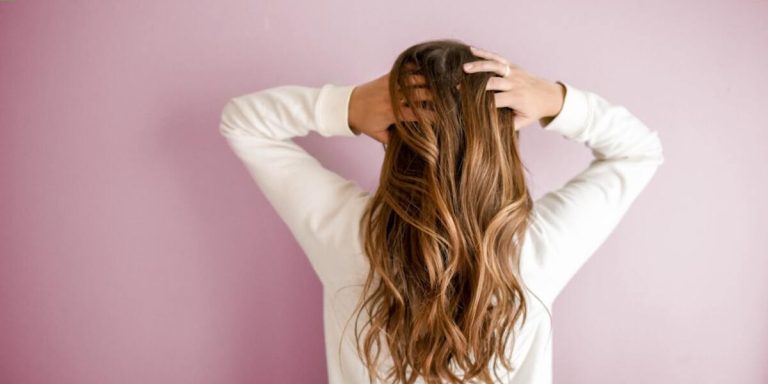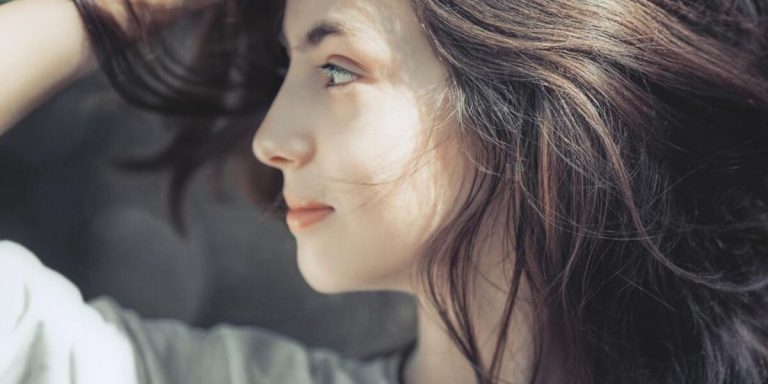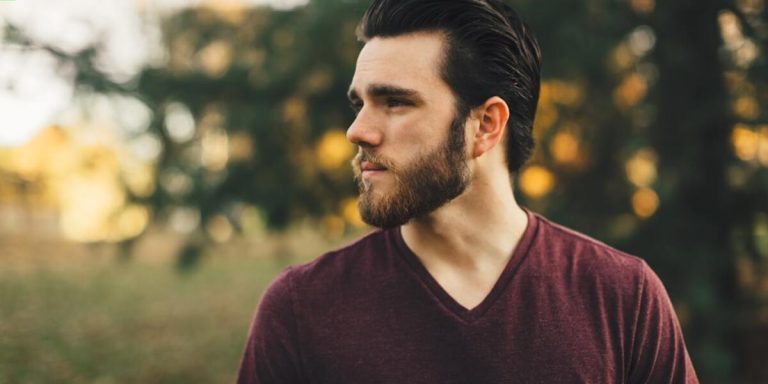Do Beanies Cause Hair Loss: Unraveling the Truth
The question, “Do beanies cause hair loss?” is a query that has somewhat puzzled fashion enthusiasts and health-conscious individuals alike. It’s an issue worth exploring because we all want to enjoy the warmth and style of our beloved hats without fearing any side-effects. But can donning these trendy head-wears really lead to such undesirable consequences?
That forms the crux of this enlightening discussion.
This blog aims to shed light on how wearing beanies might or might not affect your hair growth cycle or accelerate thinning tresses. Scientific viewpoints, expert opinions, as well as practical observations will be employed in dissecting if there exists a correlation between beanie usage and hair loss. Let’s dive into this intriguing subject matter for some much-needed clarity!
Did you know?
Surprisingly, wearing beanies doesn’t directly cause hair loss. However, if you’re already experiencing thinning or damaged follicles due to other reasons, the friction from certain materials might exacerbate the issue.
Understanding Hair Loss: The Role of Headwear
While it’s common knowledge that tight hats could potentially lead to traction alopecia -a form of hair loss due to constant pulling- the case with beanies isn’t as straightforward. Beanies are typically loose-fitting knit caps often worn during colder months for warmth. Their overall impact on your hairs’ health primarily depends on how they’re used.
Many argue that wearing a beanie doesn’t increase shedding because beanies don’t exert enough pressure to cause traction alopecia, unlike tight turbans or ponytails. Another perspective suggests that prolonged use might suffocate the scalp, leading to sweat accumulation. This creates an environment that encourages bacterial growth and potentially blocks follicles, disrupting the normal hair cycle and causing premature fallout.
In conclusion though, while there may be no direct evidence pointing at ‘beanie-induced’ baldness especially considering its wear-style variability amongst users combined with other individual-specific lifestyle/hormonal/genetic aspects playing larger roles behind most cases – undue tension plus poor hygiene practices certainly are detrimental factor worth mitigation within our everyday routines regardless type/headpiece involved.
Myths and Truths about Beanies and Baldness
There’s been persistent speculation over the years, with some individuals associating wearing beanies with hair loss. But let’s take a closer look into this matter and debunk common myths while discovering truths.
One widespread myth is that beanies cause friction which leads to hair breakage and eventual baldness. However, scientific evidence proves otherwise – occasional wear of hats or beanies does not directly lead to significant hair fall. On the other hand, constant rough handling may trigger physical damage leading to broken hairs; but it doesn’t affect your follicles’ ability to produce new strands.
Another prevalent misconception revolves around heat trapped by beanies causing scalp sweatiness and subsequent weakening of roots resulting in thinning hairlines or bald patches. Yet again, factual data refutes these claims as basic human physiology maintains our body temperature within safe limits under various conditions including hat-wearing times.
Now moving onto an intriguing correlation between tight headwear such as beanie caps and patterned baldness assumed due its pressurizing effects on blood circulation needed for healthy growth cycles. Here lies a kernel of truth – Tight headgear compressing scalp could limit necessary nutrients reaching each cell due its impact on peripheral circulation thereby possibly affecting normal cycle albeit slightly enough unless worn excessively long periods daily over time.
Analyzing How Tight Accessories Affect Scalp Health
Wearing tight hair accessories, like beanies or hats, is a common practice worldwide. But have you ever wondered – do beanies cause hair loss? If so, how does this happen?
In reality, the scalp health depends on several factors; however, external influences such as headwear can also play significant roles. Let’s dive deeper into understanding if and how wearing these items might affect your hair growth.
Firstly, it’s essential to know that not all instances of wearing beanies would result in baldness or thinning locks. Hair Loss could occur only when there are certain straining circumstances involved – typically tied to ways we wear them regularly.
Here’s an example: When you wear a beanie too tightly and for extended periods daily–you’re putting consistent pressure on your delicate follicles causing traction alopecia over time—this form of gradual yet persistent tension leads hairs to weaken at their roots prematurely.
Secondly comes the aspect of reduced blood circulation due to prolonged use of tight headgear including but not limited bennies. Our crowning glory thrives upon efficient nutrient delivery via steady blood flow towards our heads’ top—the tighter the cap—we obstruct routes resulting in weaker strands eventually leading shedding more than usual!
Another critical factor associated with excessive usage is sweat build-up! Beanies made from synthetic materials hardly let skin breathe causing sweaty moist conditions perfect for fungal growth—one biggest enemies behind premature fallouts!
The Science Behind Traction Alopecia: When Hats Harm
Traction alopecia – a term that may not be common, but its effects are far-reaching and prevalent. Essentially, it’s a type of hair loss caused by the continuous pulling on one’s tresses. Do beanies cause this?
The answer is more nuanced than just a simple yes or no.
This condition often results from practices that exert heavy tension on our scalp over extended periods – think tight braids, ponytails…and yes, even some types of hats such as beanies can contribute to traction alopecia if they’re worn too tightly for prolonged times. It’s crucially important to realize that wearing these doesn’t guarantee you’ll suffer from hair fall; rather it increases your risk when other contributing factors like genetics and hormonal imbalances come into play.
Furthermore, researchers in 2023 emphasize how both external physical stressors (like overly-tight headwear) combined with internal biological changes provide ideal conditions for traction alopecia onset. Hence the relationship between wearing beanies regularly and experiencing hair loss isn’t direct—but there is potential harm possible particularly if individuals already have predisposing causes towards follicular damage.
Identifying Symptoms Linked to Hat-Induced Hair Thinning
Wearing hats is a common sight, especially in colder climates where headgear like beanies keep us warm. But did you ever wonder whether your favorite beanie could contribute to hair loss? The answer lies within the question “do beanies cause hair loss,” an inquiry causing considerable worry among hat enthusiasts.
Frequent and tight-fitting hat wearers may experience a form of alopecia known as traction alopecia. This condition results from consistent pulling or ‘traction’ on the roots over time. When we constantly tug at our follicles by wearing snug caps, such as beanies, they weaken leading to thinning and eventual baldness.
Identifying early symptoms can help mitigate this concern effectively:
1. Receding Hairline – One visible symptom includes receding hairlines that typically start around your temples but progress throughout your scalp if not resolved.
2. Redness And Irritation – If wearing a cap leaves you with an irritated scalp every day, it’s likely due to unnecessary pressure disrupting blood flow which worsens when overlooked.
3. Brittle Strands – Are there many broken strands in your brush after detangling efforts post-beanie removal? Weakened cuticles render hairs prone to breakage; another impact felt because of constant strain under closely fitted hats.
4.Changes In Texture- Long-term suffocation underneath caps alters original texture turning silky locks rougher eventually worsening into massive fallout often mistaken for pattern baldity.
Preventative Measures for Hat Lovers
Hat enthusiast, don’t fret! The answer to the question “Do beanies cause hair loss?” isn’t a straightforward ‘yes’ or ‘no’. It’s all about how you wear them and for how long.
Certain preventative measures can help ensure your love of hats doesn’t cost you strands.
Firstly, it’s important not to pull your beanie too tight around your head. A snug fit might feel comfortable, especially in cold weather but applying constant pressure on your scalp may lead to Traction Alopecia – a form of gradual hair loss caused by tension on the follicles over time.
Secondly, vary where you place your hat every day. Changing up placement reduces strain and gives different sections of hair some breathing space preventing any potential damage.
Another vital step is limiting the amount of time wearing a beanie each day. Extended hours could result in unnecessary stress on fragile follicles causing breakage which leads us back again at do beanies cause hair loss? Yes only if worn excessively without giving breaks!
A crucial aspect often overlooked involves cleanliness; Regular cleaning maintains hygiene thus eliminating chances for bacterial buildup leading into other complications like Folliculitis (inflammation occurring due to an infection).
Lastly remember that even though we’re talking about hats here primarily – everything goes! Any accessory worn incorrectly or excessively may harm our precious locks so try mixing things up with scarves, bandanas as they are less likely to exert undue pressure onto one concentrated area thereby reducing traction alopecia risk remarkably.
Lifestyle Factors Contributing to Hair Fall
Physical and psychological stressors significantly contribute to hair loss, often serving as silent accelerators of the condition. People frequently overlook modern lifestyle habits that also play a role, such as:
- Wearing tight hairstyles
- Using headgear like hats and beanies
Though no scientific consensus confirms that ‘beanies cause hair loss,’ consistently covering your scalp with any material—such as a beanie, cap, or hat—particularly when damp-haired can lead to unhealthy scalp conditions that might promote premature hair shedding.
On more detailed observation of our daily routines might reveal an alarming correlation between certain practices and accelerated hair fall. A notable example here involves prolonged exposure of our tresses under beanies or similar accessories without giving them enough breathing space leads to a sweaty environment on the scalp surface which may affect follicle health over time.
In 2023 where fashion-forward trends mean embracing comfort chic lifestyles including sporting trendy wearables such as beanies throughout different seasons raises questions about their potential impact on our crowning glory’s well-being. Albeit harmless if worn sporadically, frequent usage traps heat leading to excessive sweating which further paves way for bacterial growth increase dandruff issues thereby causing itchiness ultimately affecting overall Hair health.
Assessing the Impact of Diet and Stress on Hair Condition
Your dietary intake plays an essential role in maintaining your hair health. Consuming nutrient-rich food can help strengthen your hair roots while neglecting balanced meals may lead to malnourishment of the scalp causing various issues like thinning or falling out.
For instance: if you are fond of wearing hats or beanies all day long but don’t get enough nutrients from your diet, chances are high that it might impact negatively on overall hair condition. This triggers an important question – do beanies cause hair loss? Not directly; however coupled with poor nutrition they might contribute towards creating conditions conducive for fallouts.
Another significant factor influencing one’s crowning glory is stress levels. It’s no secret that chronic emotional strain causes many physiological manifestations including alopecia (hair loss). When dealing with intense periods of anxiety or tension, try methods like meditation or yoga to combat these negative effects on not just your body but also on hairs’ well-being.
The Interplay Between Grooming Habits and Follicular Damage
The hypothesis about hats causing baldness has been there for ages – but what’s really happening? The truth lies somewhere in between speculation and fact.
Let’s start with how a beanie could potentially harm your scalp health. By trapping heat, a tight-fitting hat can create an environment conducive to increased sebum production on the head; this oil build-up may block pores leading to follicular damage.
Another common concern is traction alopecia – condition caused by constant pulling of hair roots over time due to wearing uniforms fit caps or any other head coverings like beanies which provide persistent pressure on specific areas of the scalp.
1. Choose loose fittings: Too tightly bound beanies compress your strands reducing blood circulation crucial for healthy growth.
2. Material matters: Opting materials like cotton instead synthetic ones helps letting air flow preventing sweaty scalps avoiding ideal conditions for bacterial breeding.
3. Duration considerations: Wearing them only when necessary reduces exposure risks as well curbs habit formation minimizing chances developing friction related issues later future years 2024 beyond!
Conclusion
In conclusion, it’s worth remembering that while the question “do beanies cause hair loss?” may seem odd at first glance, there are indeed some logical connections. However, don’t let this fashion accessory scare you away! While snug hats can potentially affect your scalp’s health in a minor way, they’re not major contributors to significant hair loss which is often associated with other underlying factors.
Feel free to dive deeper into our website where we unravel more myths and facts about various ‘Hair Loss Causes’. Hair fall might be daunting but understanding its causes better equips us to tackle them head on (pun intended). From dietary habits to hairstyling products – everything has an impact.
So go ahead and invest time exploring robust research-based content designed simply for enriched user experience around preventing and managing such conundrums of daily life.







